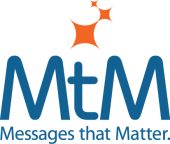A good positioning strategy can do more than create awareness and demand for your B2B product or service. Through thoughtful execution of your strategy in marketing campaigns, you can also make your selling more productive by beginning the sales qualification process during the positioning process. But it works only if you are willing to face reality, and recognize that your product or service is best suited for a specific set within a target audience, not every buyer. That’s why there are usually many products in B2B software markets like CRM, Business Intelligence, Corporate Performance Management, ERP, etc.
You really can’t sell to everyone. And you shouldn’t try.
Very few companies in B2B software and technology sell products designed for every company known to man. There are good fits and less optimum ones. Companies are often reluctant to exclude “anyone with a wallet” from their marketing effort. But trying to be all-inclusive leads to fuzzy positioning and weak marketing messages. You’ll be more successful by making it clear in your marketing communications who should be considering your product, and, perhaps, who should not. Rigorous qualification from the start has another benefit – you don’t waste precious marketing dollars on the wrong target market.
There may be exceptions to this “you can’t sell to everyone” rule. Companies that offer multiple products – usually through acquisition (Oracle, SAP and IBM come to mind) – might be able to say with some justification that any company is their target market. But even these giants can’t sell to mom and pop operations.
Focus on buyers most likely to buy from you
A better approach is to focus your positioning strategy on buyers most likely to buy a product like yours. First, identify the demographics (company size, SIC codes, etc.) and psychographics (key buyer problems, market and industry trends, etc.) of your target market during your positioning process which is described in this eBook: Positioning – how to talk so the market will listen.
Build a very detailed profile of your ideal target buyer. Then as you work through the positioning process using the profile as a guide, you’ll find your marketing message focused like a laser beam on companies most likely to buy from you.
You may still pick up a few one-offs, which is why many companies believe they can sell to everyone, but the bulk of your prospects will be ideal fits. You have the product they need to solve their most pressing problem. Instead of hoping the law of averages brings you some business, you can expect to close more good deals. What’s more, since you and your prospects are made for each other, these deals will have the highest chance of success during implementation and beyond. Congratulations! You now have a loyal customer base that will sing your praises and encourage others to check out your product.
Use your marketing content to qualify prospects
In addition to your core message to the market, here are some other ways to communicate in a way that qualifies prospects in and out:
- Describe your ideal buyer in a way that will get them nodding their head, and thinking, “that’s me,” or “that’s not me.”
- Describe the problem you solve in your marketing communication. An excellent example is an old Cognos print advertisement introducing Cognos 8 Business Intelligence. Cognos needed just two sentences to define the problem: “…But, given your complex, IT infrastructure, the reality of getting a single BI standard in place across the company has been anything but simple. Until now.” In 26 words, Cognos is telling most companies with less complex IT demands (and probably smaller budgets) to buy from someone else. Don’t contact us.
- Only communicate key benefits of your product, not everything it can possibly do. Avoid the temptation to include marginal uses for your product or to tell the world your product can do anything, which may be true… with a lot of hard work.
- Powerful, functionally rich products usually are the best fit for large, complex environments. Make it clear to the target market which environment you serve – simple, average or complex – so you fight battles you have a higher chance of winning.
- New vendors and new products appeal to early adopters, those willing to take a chance for a competitive advantage. Tell your story in a way that attracts the right buyer – a risk taker – not everyone.
- As you communicate your product’s key benefits, also be sensitive to other relevant needs of your prospects. For example, if your target is small and medium size companies, you may need to talk in terms of low cost, fast implementation and low maintenance. However, almost every company makes this claim, so you’ll need to be clever in the way you communicate without overshadowing your positioning statement.
- Clearly state the market your serve. Infor’s advertising campaigns leaves no doubt about its target markets with the headline, “I love my enterprise software,” and a sentence in the ad copy, “We focus exclusively on the manufacturing and distribution industries.” Others need not call!
Great ROI at no cost to you
Companies often measure effectiveness of marketing campaigns by number of leads per money invested, and not quality. That’s because most companies struggle to get feedback about the outcome of a lead from the channel, whether it’s from the company sales department or a VAR. Was the lead a good fit? Did it turn into a sale? This and other information is rarely communicated back to marketing, so don’t depend on back-end analysis of leads. Do a good job of building lead qualification into your positioning and marketing, and your sales team will waste less time and money pursuing leads they can’t win. It’s an investment worth making, and ROI is infinite, since it really doesn’t cost you anything.
